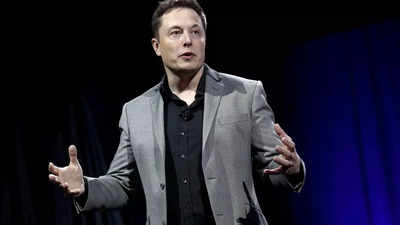
The ambitious idea of a transatlantic tunnel connecting New York City and London has resurfaced, sparked by Elon Musk ’s latest statement claiming that his company, The Boring Company, could construct it for $20 billion. The concept, which has been discussed for decades, involves building a massive tunnel under the Atlantic Ocean spanning over 3,000 miles (4,800 kilometers). Historically, such a project has been viewed as impractical due to its enormous cost, technical challenges, and the engineering scale required.
However, Musk’s innovative approach and advancements in technology have reignited global interest in this unprecedented infrastructure project. Elon Musk proposes New York-London tunnel for $20 billion The idea of a transatlantic tunnel is not new and has long been a subject of fascination among engineers and futurists. Proposed designs typically envision a tunnel stretching beneath the Atlantic Ocean, facilitating high-speed rail travel between the United States and the United Kingdom.

If realized, it would significantly transform global travel and logistics. Currently, a flight between London and New York takes approximately eight hours. A transatlantic tunnel, theoretically capable of reducing this travel time to under an hour, would be a revolutionary step in human transportation.
Previous estimates placed the cost of such a project at an astronomical $19.8 trillion (equivalent to 15.5 trillion British pounds).
By comparison, constructing the Channel Tunnel—a 38-kilometer underwater tunnel linking England and France—took six years and cost $12 billion. The scale of a transatlantic tunnel would be magnitudes larger, presenting both financial and engineering hurdles that many consider insurmountable. Elon Musk, the CEO of Tesla, SpaceX, and The Boring Company, has a reputation for proposing bold and transformative projects.
During recent discussions, Musk claimed that his tunneling venture, The Boring Company, could complete the transatlantic tunnel for just $20 billion. This assertion has drawn significant attention, as it is a mere fraction of previous estimates. Musk’s confidence stems from advancements in tunneling technology and his pioneering Hyperloop concept, which could revolutionize the way people travel across long distances.
According to Musk, the cost reduction would be achieved through innovative tunneling techniques, automation, and scalability. The Boring Company has already demonstrated its ability to construct tunnels efficiently and at lower costs in smaller projects, such as the Las Vegas Convention Center Loop. However, the sheer magnitude of a transatlantic tunnel poses unprecedented challenges that extend beyond existing projects.
The role of Hyperloop technology Central to Musk’s proposal is the integration of Hyperloop technology, a concept he introduced in 2013. Hyperloop involves pressurized vehicles traveling through vacuum-sealed tunnels, eliminating air resistance and enabling speeds far beyond traditional trains. In theory, Hyperloop trains could reach speeds of over 3,000 miles per hour (4,800 kilometers per hour), reducing the travel time between London and New York to just one hour.
The technology relies on maintaining a near-vacuum environment inside the tunnel, allowing vehicles to glide with minimal friction. Hyperloop pods would be propelled using magnetic levitation (maglev) technology, already employed in high-speed trains in countries like Japan and China. While still in the experimental stage, significant advancements have been made in recent years to bring Hyperloop closer to reality.
Musk’s proposal combines this futuristic transportation model with innovative tunneling solutions, positioning it as a feasible option for intercontinental travel. Challenges facing the project Despite Musk’s optimism, the transatlantic tunnel faces several critical challenges that cannot be overlooked: Technical feasibility : Building a 3,000-mile tunnel under the Atlantic Ocean would require overcoming immense engineering hurdles. Factors such as oceanic pressure, underwater geography, and environmental concerns pose significant risks.
Any construction would need to withstand harsh underwater conditions and potential seismic activity. Cost and funding : Even with Musk’s $20 billion estimate, securing funding for such a project would be challenging. Public-private partnerships, international cooperation, and large-scale investments would be essential to finance the tunnel’s development.
Technological readiness : While Hyperloop technology shows promise, it remains largely unproven on the scale required for a transatlantic tunnel. Ensuring safety, reliability, and efficiency at such high speeds is a considerable challenge. Environmental impact : The environmental effects of constructing a tunnel beneath the Atlantic Ocean must be carefully studied.
Disruptions to marine ecosystems, carbon emissions from construction, and long-term maintenance concerns require thorough analysis. Regulatory and geopolitical issues : Coordinating a project of this magnitude between multiple governments, agencies, and stakeholders across two continents adds another layer of complexity. Regulatory approval, legal frameworks, and international agreements would need to be established.
Public and industry reactions Musk’s proposal has garnered mixed reactions from experts, policymakers, and the public. Proponents argue that the transatlantic tunnel, if realized, would be a game-changer for global connectivity, commerce, and travel. It could significantly reduce travel times, boost trade, and create millions of jobs during construction and operation.
Critics, however, remain skeptical. They point to the ambitious timeline, the unproven nature of Hyperloop technology, and the history of cost overruns in large infrastructure projects. Many question whether Musk’s $20 billion estimate is realistic, given the unprecedented scale of the tunnel.
Nevertheless, Musk’s track record of delivering groundbreaking innovations—such as reusable rockets with SpaceX and electric vehicles with Tesla—has led some to believe that his vision, though audacious, is worth exploring. Also read | Airtel recharge plans | Jio recharge plans | BSNL recharge plans.











